1. Core Characteristics of Silver Needle White Tea: Why Brewing Requires Extra Care?
Appearance Features: Silver Needle White Tea is made from plump buds of large white tea or large downy tea varieties. The buds are tender and full, covered in white down ("silver fuzz"), with a silvery white or pale yellow color, resembling silver needles. This down is rich in amino acids, a key source of umami, and requires careful protection during brewing.
Internal Characteristics: High in amino acids and relatively low in tea polyphenols, the tea soup offers a fresh, sweet taste with minimal bitterness or astringency. Its aroma is fresh and elegant, dominated by down fragrance, orchid fragrance, and honey fragrance. The dense structure of the buds contains abundant substances, giving it good infusing resistance, though flavor release is slow, requiring precise temperature and time control.
Impact of Processing: Using a minimalist process of withering and drying, it retains the natural nutrients and flavors of the tea to the greatest extent. Without rolling or fermentation, the tea remains delicate and can be easily damaged by high temperatures or strong water flow during brewing, leading to cloudy soup or aroma loss.
Protecting the Silver Fuzz: The silver fuzz is crucial to Silver Needle's flavor. Too rapid water flow or high temperatures during brewing can cause the fuzz to detach and float, clouding the soup and damaging amino acid structures, reducing freshness.
Temperature Control: Excessively high temperatures can "cook" the buds, creating a stale taste; too low temperatures fail to release aroma and flavor. Finding the precise temperature balance is essential.
Time Management: Nutrients in the buds release slowly. Too short a steeping time results in a bland taste, while too long may cause slight astringency from over-extracted polyphenols, requiring gradual adjustment.

2. Pre-Brewing Preparation: Details Determine Flavor Presentation
Recommended Main Brewers:
Jianzhan Gaiwan: A 100-120ml shallow-bodied Jianzhan gaiwan is preferred, with natural ore glaze and breathable clay that conducts heat gently. It protects delicate buds while adsorbing impurities through micro-pores, enhancing soup purity. The Simple glaze contrasts beautifully with silvery buds, offering unique visual appeal, especially favored by traditional tea utensil enthusiasts.
Jianzhan Solo Cup: A 100-120ml Closing Jianzhan cup with a rounded shape that gathers aroma. Its heat-retaining clay slows temperature drop, preserving the sweet taste of Silver Needle longer. For solo drinking, tea can be brewed directly in the cup, enjoying the sight of buds unfurling—a truly elegant experience.
Jianzhan Fairness Cup: A matching Jianzhan fairness cup with Warm glaze that doesn't absorb aroma, truthfully presenting scent layers. Tea flows smoothly along its walls, complementing the rustic Jianzhan aesthetic and enhancing the tasting ritual.
Auxiliary Utensils: Prepare a bamboo tea spoon (to avoid damaging buds and Jianzhan glaze with metal), Jianshui pottery tea lotus (natural breathable ceramic highlighting silver fuzz), Jianzhan tasting cups (matching the main brewer with thin walls for even heat conduction), thermometer (for precise temperature control to protect both Jianzhan and tea), and timer (to manage steeping time for consistent flavor).
Water Quality Requirements: Prioritize low-hardness mountain spring water or purified water with neutral to slightly acidic pH (6.5-7.0). Avoid chlorinated tap water or high-mineral content mineral water, which can affect sweetness and clarity. If using tap water, let it stand for 24 hours or filter through a water purifier to remove chlorine and impurities.
Temperature Standards: Recommended temperature is 80-85℃. For new tea (current or previous year), use 80℃ to avoid scalding tender buds; for Silver Needle stored 1-3 years, 85℃ enhances release of complex aged aromas. Heat water until small "fish-eye" bubbles form (just before rolling boil), then let stand 30 seconds to reach target temperature for optimal freshness.
Tea Ratio: Follow the "less is more" principle—3-4g for 100ml gaiwan, 4-5g for 120ml gaiwan. This ensures buds have space to unfurl, preventing cloudy soup or dull taste from overcrowding. Beginners should start with less tea, adjusting to preferred strength gradually.
Awakening the Tea: Remove Silver Needle from sealed packaging, place in a tea lotus, and let stand in a well-ventilated area for 10-15 minutes. This allows the tea to acclimate to ambient humidity, awakening subtle vitality and ensuring even flavor release during brewing.
Cleaning Misconception: No need to rinse the tea ("awakening rinse"). Silver Needle undergoes pure processing with clean buds—rinsing would remove down and amino acids, damaging freshness. Direct brewing preserves complete flavor, a key difference from other teas.

3. Step-by-Step Brewing Method for Silver Needle White Tea: The Art of Gentle Brewing
Utensil Warming: Rinse gaiwan, fairness cup, and tasting cups with 80℃ water to remove odors and preheat, preventing sudden temperature drops that inhibit aroma release. Thoroughly drain water to keep utensils dry and avoid diluting the tea soup.
Tea Addition Technique: Gently transfer Silver Needle from tea lotus to gaiwan using a spoon, avoiding vigorous movement that dislodges down. Take a moment to appreciate the dry tea—plump buds covered in silvery down, creating a "silver-cloaked" beauty that adds ritual to the experience.
Water Injection Method: Use the "gentle rim pouring" technique—thin, slow water flow Along the gaiwan's inner wall, avoiding direct impact on buds. Use just enough water to cover the tea, keeping the pour height 3-5cm above the gaiwan to minimize bud disturbance. After first infusion, gently swirl the gaiwan (with minimal movement) to ensure even water distribution among buds.
Steeping Time Control:
1st infusion: 15-20 seconds. Light soup with initial down fragrance, primarily awakening buds and preparing for subsequent flavor release.
2nd-3rd infusions: Extend by 5-10 seconds each (25-30s, 35-40s). Buds gradually unfurl, soup freshness intensifies, with down fragrance blending with orchid notes—peak flavor stage showcasing Silver Needle's signature sweetness and freshness.
4th-6th infusions: Extend by 10-15 seconds each (45s-1min). Buds fully unfurl like bird tongues, with continuous flavor release creating sweet, Warm soup with emerging honey notes and fuller texture.
7th infusion onwards: Extend to 1-2 minutes until flavor fades, with lingering sweet aftertaste demonstrating Silver Needle's endurance and increasing sweetness with each infusion.
Soup Serving Technique: Tilt the gaiwan at a steady 45-degree angle, pouring gently but quickly to ensure complete soup extraction within the time limit, preventing over-steeping that affects subsequent infusions. Serve promptly from fairness cup to tasting cups, appreciating the natural "down cloudiness"—normal for Silver Needle (suspended down, not turbidity) and a sign of high freshness.
Cold Brewing Method: Ideal for summer. Place 3g Silver Needle in a 500ml sealed bottle, add room-temperature purified or mineral water, refrigerate for 6-8 hours (or stand at room temperature for 8-12 hours). Cold brewing maximizes amino acid retention, creating an exceptionally sweet, refreshing soup with intact down and clear color—perfect for cooling refreshment.
Decoction Method (for Aged Needles): Try brewing Silver Needle stored over 3 years. Place 2-3g in a glass teapot, add 500ml 80℃ water, bring to boil, then simmer 1-2 minutes, steep 30 seconds off heat before serving. Aged Silver Needle develops calm aromas and mellow taste through decoction, with no bitterness, revealing distinct jujube and medicinal notes—ideal for warming in autumn and winter.
Early Stage (1-2 infusions): Dry tea appears silvery white or pale yellow; brewed buds stand or float like silver spears. Pale yellow clear soup with prominent down fragrance, subtle grassy and floral notes. Sweet taste with obvious freshness, slight coolness on the tongue, and lingering floral aftertaste in the throat.
Middle Stage (3-5 infusions): Buds gradually unfurl like bird tongues in elegant attitude. Soup deepens to light apricot-yellow, bright and clear. Down fragrance merges with orchid and honey notes, creating rich, lasting aroma. Full soup with sweet freshness, silky texture, obvious saliva stimulation, and sweet aftertaste spreading from cheeks to entire mouth with long finish.
Later Stage (6th infusion onwards): Buds fully unfurl, soft and plump. Soup turns apricot-yellow, warm and gentle. Aroma shifts to warm honey and aged notes (especially pronounced in aged Silver Needle). Soup tastes sweet and mild with no bitterness, lingering sweet finish, and moisturizing throat feeling—showcasing white tea's "sweeter with each infusion" Traits and leaving a light, comfortable sensation.
Appearance and Color: Dry tea should have abundant silver down, plump uniform buds, and silvery luster. Brewed buds should stand or float evenly with distributed down. Soup should be clear and bright, transitioning from pale yellow to light apricot and finally apricot-yellow, with no cloudiness (normal down suspension is not a quality issue).
Aroma Appreciation: Dry tea has fresh, lifting down fragrance. Warming the cup reveals emerging orchid and honey notes. Brewed tea offers dominant down fragrance with layered hot aromas and lasting sweet cold aromas (cup bottom scent), free from smoky, musty, or storage odors—pure and natural.
Taste Experience: Focus on three key qualities—"freshness, sweetness, smoothness". High freshness with obvious sweetness, no astringency or only minimal transient astringency. Soup glides smoothly down the throat with rapid, lasting saliva stimulation and sweet aftertaste, creating a full, layered taste from tongue to throat.
Finish Evaluation: The throat feels moist and comfortable with long-lasting aroma, leaving a light, relaxed sensation. High-quality Silver Needle offers an elegant, enduring finish with no heaviness—embodying the pure "snow in tea" Traits.

4. Storage Recommendations and Precautions: Maintaining Fresh Quality
Short-Term Storage (consume within 1 year): Seal in aluminum foil bags or tin cans, store in a cool, dry, dark, odor-free environment at around 20℃ with 50-60% humidity. Reseal immediately after each use to prevent moisture absorption or odor contamination that affects freshness.
Long-Term Storage (over 1 year): Use triple packaging (food-grade plastic bag + aluminum foil bag + carton) or store in purple clay or ceramic jars in a ventilated, dark, temperature-stable tea warehouse. Minimize opening to allow natural aging—aged Silver Needle gradually develops from fresh to mellow with complex aromas like jujube and medicinal scents.
Avoid High-Temperature Brewing: Temperatures over 90℃ can "cook" buds, creating stale flavors that destroy freshness—new tea is particularly sensitive, requiring strict temperature control.
No Vigorous Stirring or Pressing: Never stir tea with a spoon or squeeze buds in the gaiwan during brewing, as this dislodges down and breaks cells, causing cloudy, astringent soup and losing pure taste.
Best Consumed Freshly Brewed: Silver Needle soup should not sit too long—oxidation reduces freshness, and settled down affects texture. Consume within 30 minutes of brewing to enjoy optimal flavor.
Distinguish "Down Cloudiness" from Turbidity: Small amounts of suspended down in Silver Needle soup are normal ("down cloudiness") and indicate high freshness. Turbidity from excessive heat, tea spoilage, or poor water quality will have off-odors (stale, musty)—learn to distinguish for safe, quality tasting.


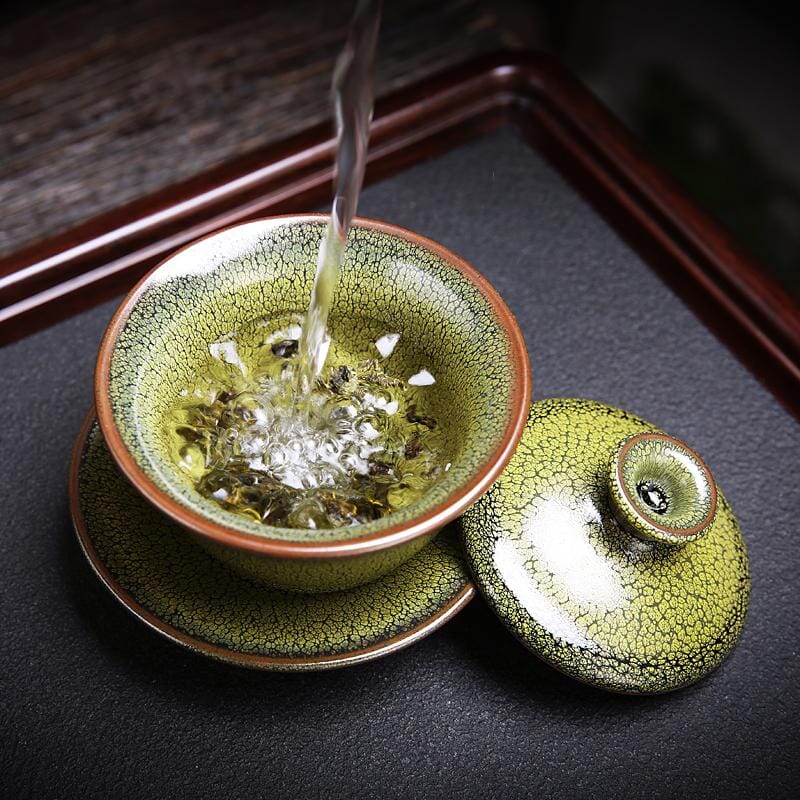
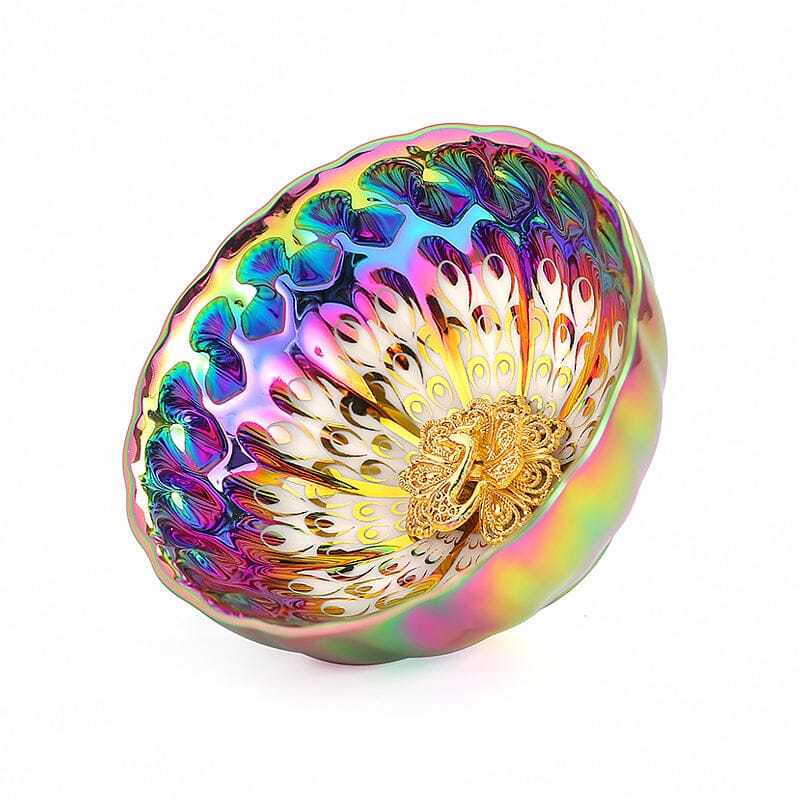


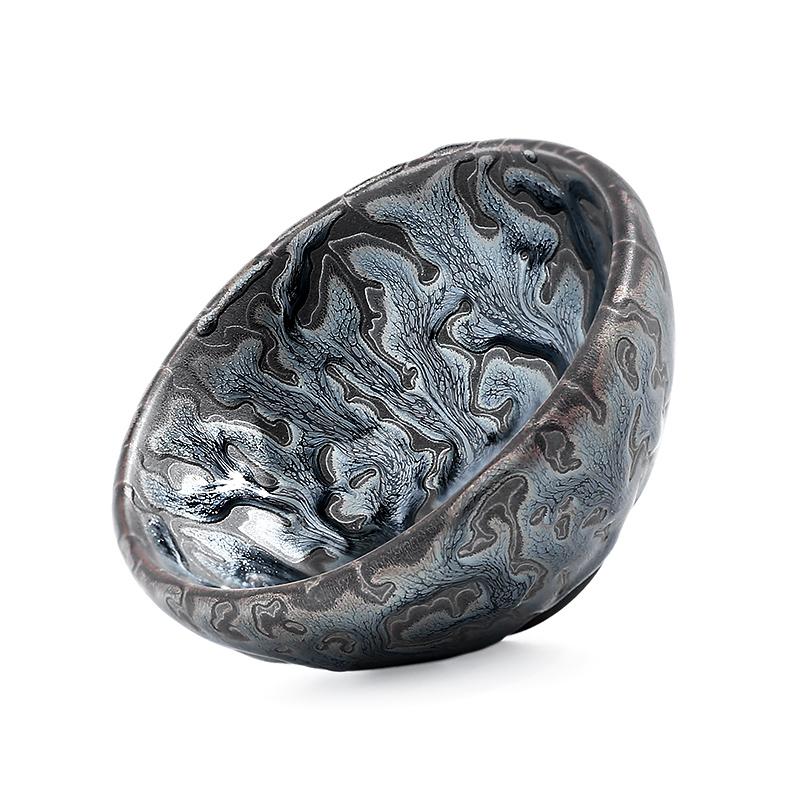
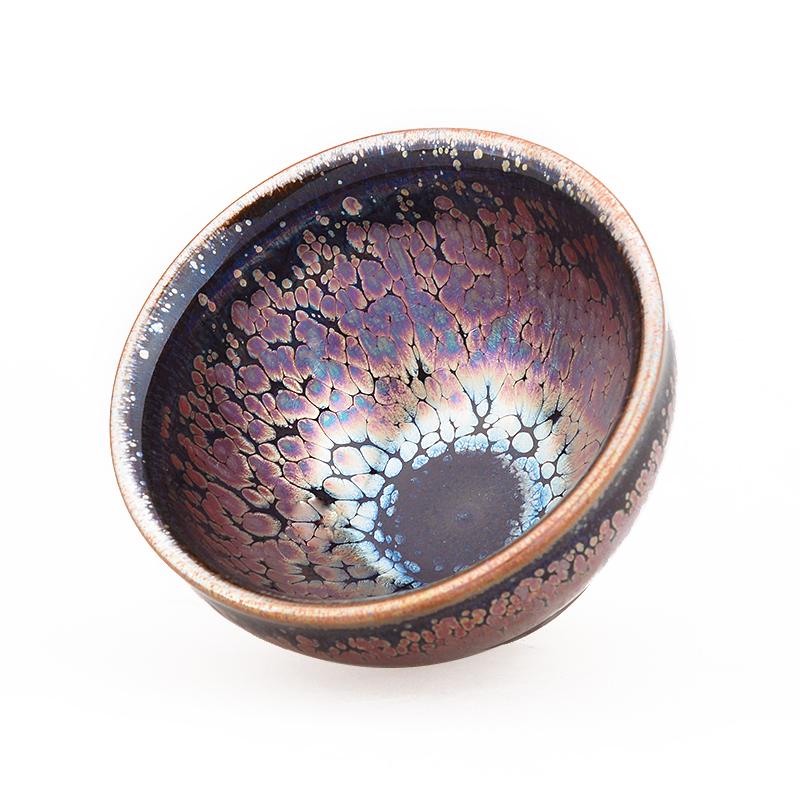
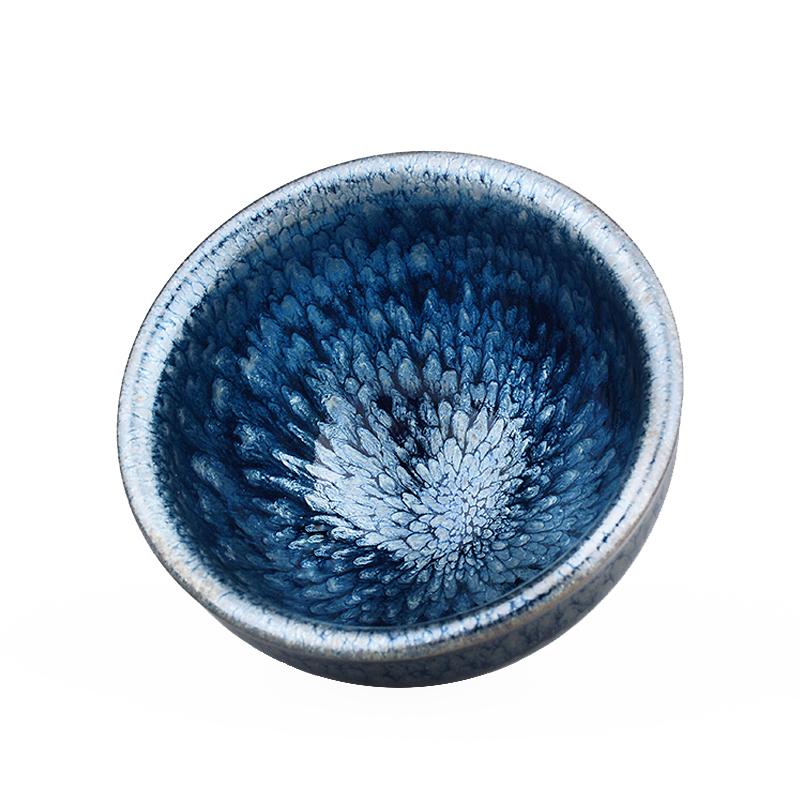
Condividere:
Why is Pu'er Tea Wrapped in Cotton Paper?
How to Brew Bamboo Nest Narcissus